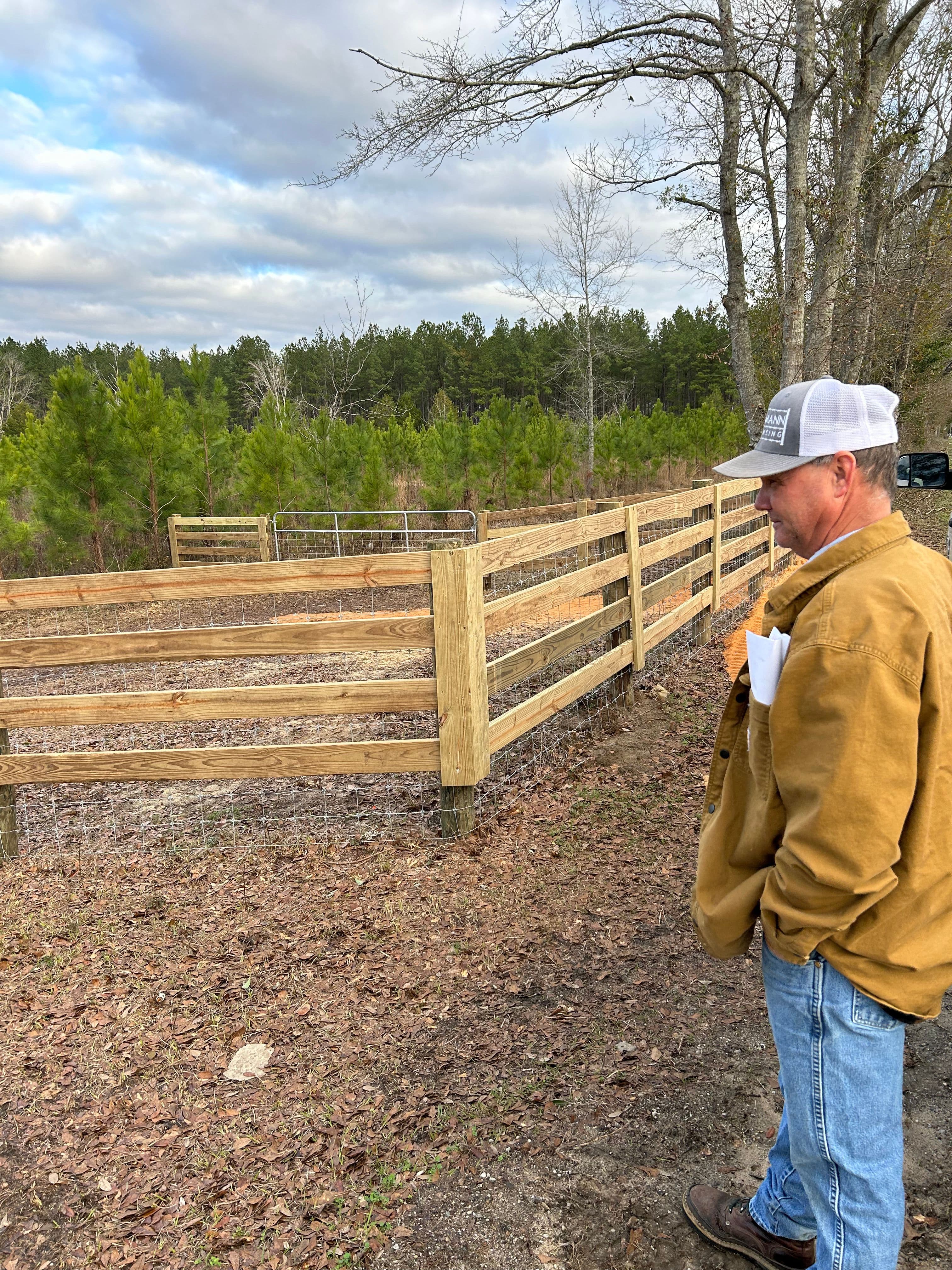
7 Great Farm Fence Maintenance Tips for Lasting Durability
Introduction
A reliable fence protects livestock, marks boundaries, and saves money by preventing escapes and damage. The most cost-effective plan is not replacement, it is steady upkeep. Use these seven field-tested tips to keep wood, wire, and electric systems straight, tight, and working in all seasons.
1) Conduct regular inspections
How often: Walk high-pressure areas weekly, the rest monthly, and after every major storm.
What to check:
- Damage: Loose or broken wires, cracked boards, leaning or heaved posts, low spots, and washouts.
- Gates and latches: Hinges, pins, chains, and keepers should move freely and align properly. Lubricate and tighten hardware.
- Vegetation: Clear grass, vines, and brush that hold moisture, hide problems, or bleed voltage from hot wires. Create a clean two-to-three-foot corridor along the line.
2) Repair quickly and replace weak sections
Small failures spread if you ignore them. Keep a simple kit ready, then fix issues the day you find them.
- Immediate actions: Re-tie or crimp a wire, reset a staple or clip, plumb a post, or add a temporary hot polywire to hold stock.
- Use durable materials: Class 3 galvanized wire, pressure-treated ground-contact posts, corrosion-resistant fasteners.
- Reinforce stress points: Corners, ends, and gates need true H-braces, proper spans, and diagonals.
- Call a pro when needed: Long pulls, major brace rebuilds, and re-tensioning multiple spans demand specialized tools and experience. For larger structural issues, professional Farm Fence Repair can restore alignment and strength efficiently.
3) Apply seasonal strategies
Winter: Watch for frost heave and wind load. Re-plumb tilted posts, tighten sagging wire, and keep snow from packing against lines.
Spring: Walk the perimeter after thaws and heavy rain. Fix washouts, rebuild footing at gates, and re-establish clear zones before growth takes off.
Summer: Heat exposes weaknesses. Monitor tension, treat rust early, and seal or stain exposed wood to limit checking and UV damage. Regular inspections paired with proper Farm Fence Installation techniques ensure your fence endures year-round conditions.
Fall: Remove leaves and limbs that trap moisture, touch up coatings, and test energizers and grounds ahead of winter.
4) Maintain tension and alignment
- Wire systems: Use calibrated stretchers. Pull to the manufacturer’s spec, then lock terminations with proper knots or crimps. Even tension prevents waves, low spots, and animal testing. High-quality High Tensile Fence Installation provides lasting tension and strength for large pasture runs.
- Wood systems: Realign leaning posts, replace split rails, and add diagonal bracing where stock rubs.
- Posts: The post is the structure. Probe for rot at grade on wood, check rust and footing on steel, and re-set anything that moves under load.
5) Protect against weather and environment
- Moisture: Seal wood and keep soil from mounding at posts. Choose coated or galvanized steel to resist rust.
- Wind and storms: Place braces correctly, shorten unsupported spans in exposed areas, and use windbreaks or vegetation to reduce gust pressure near corners and gates. Properly designed Wood Fence Installation
adds both durability and curb appeal to weather-exposed farm areas. - Sun and UV: Apply UV-resistant stain or paint to wood, and protect cut ends of metal with cold-galv or appropriate coatings.
6) Prevent animal and pest damage
- Livestock pressure: Add offset hot wires at shoulder height to stop leaning and rubbing. Protect corners and water points with extra braces.
- Pests: Inspect wood for boring insects or rodent chew. Treat posts and remove debris piles that create habitat.
- Wildlife: For diggers, use a buried apron outside the fence. For jumpers, increase height or add an offset hot wire. Motion lighting near gates can deter night visitors.
7) Set a long-term plan
- Schedule: Put inspections, vegetation control, and tension checks on a calendar. Keep a simple log of fixes by section.
- Train the team: Show family or employees how to spot lean, sag, and hardware wear, and how to make safe field repairs.
- Budget: Reserve funds each year for posts, wire, hardware, stains or coatings, and occasional professional work. Planned maintenance costs less than emergency rebuilds. When replacement is needed, our Fence Removal Services team can clear old sections safely before new installation begins.
Quick field checklist
TaskFrequencyWhat good looks likeWalk the lineMonthly, plus after stormsPlumb posts, tight wire, clear corridorGate serviceMonthlySmooth swing, aligned latch, lubricated hingesVegetation controlMonthly in growing seasonNo plants touching hot wires, clear base of postsTension checkQuarterlyNo waves or low spots, firm reboundsCoatings and treatmentSpring and FallSealed wood, protected steel cut ends
Conclusion
Durability comes from habit, not luck. Inspect often, fix fast, protect against weather, reduce animal pressure, and plan your work. A few hours each month keeps the perimeter straight, animals safe, and costs down for years.
Share this article
Related Posts
Need Help?
Get expert fencing advice and free quotes. Our team is ready to help with your project.
Available Mon-Fri, 8am-6pm EST
Related Posts

5 Goat Fence Ideas to Keep Your Herd Safe in the Southeast
Top Goat Fence Ideas for Southeastern Farms Your goats are clever, curious, and natural escape artists. Here in the Sout...
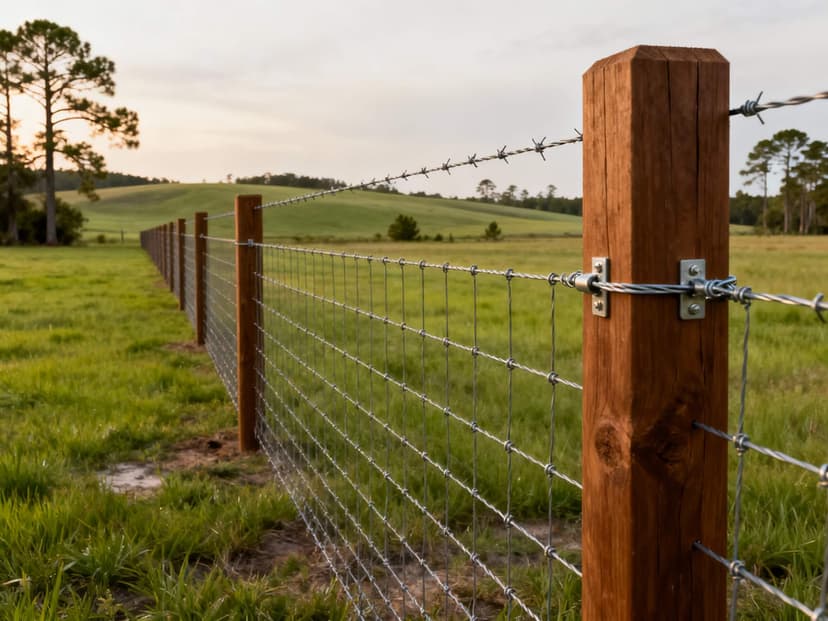
A Farmer's Guide to Stock Fence Wire in the Southeast
Why a Quality Wire Coating is Non-Negotiable in the Southeast Living and working in the Southeast means dealing with a u...
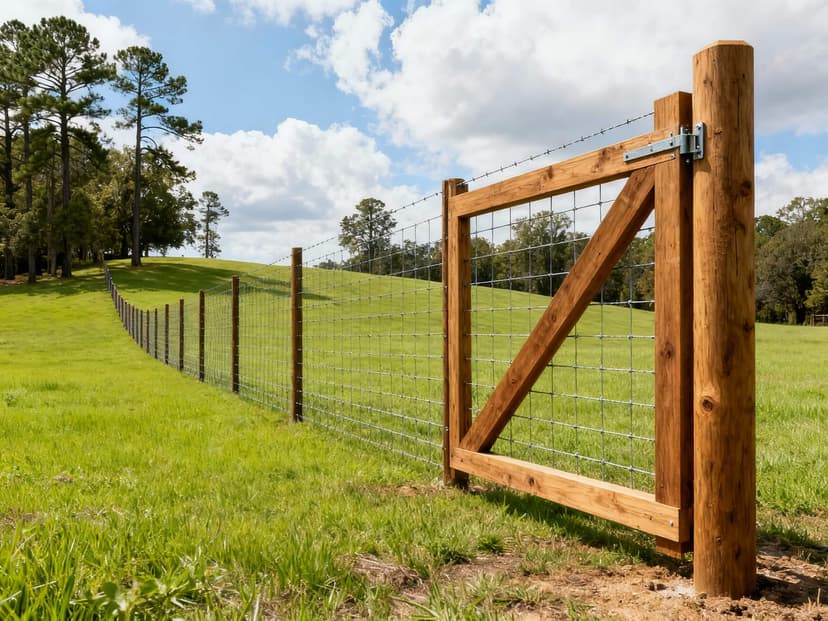
Stock Fencing Guide: Choosing the Best for Southeast Farms
A Complete Guide to Stock Fencing for a Southeastern Farm Choosing the right stock fence is one of the most critical dec...
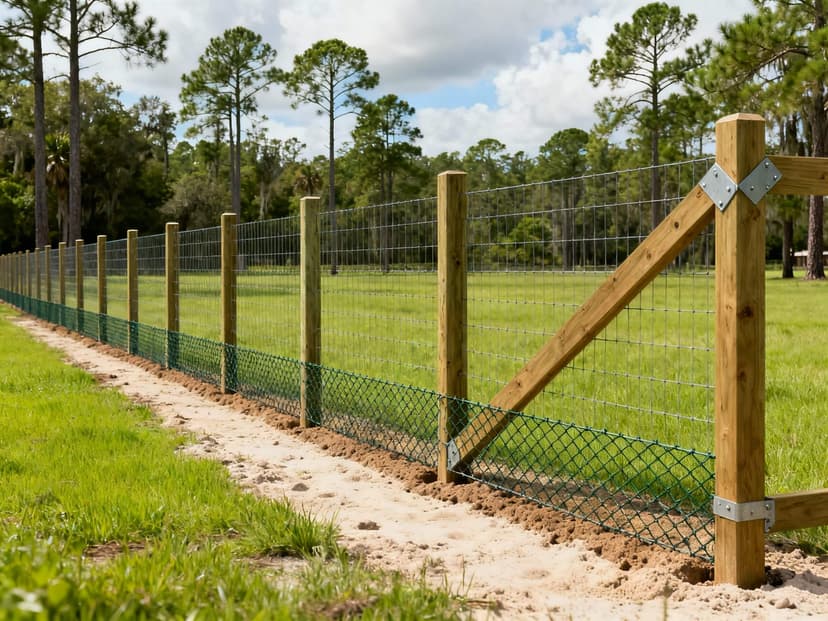
Escape Proof Goat Fencing: A Complete Guide
Why Goats Are Master Escape Artists If you've ever owned goats, you know they are clever, persistent, and surprisingly a...
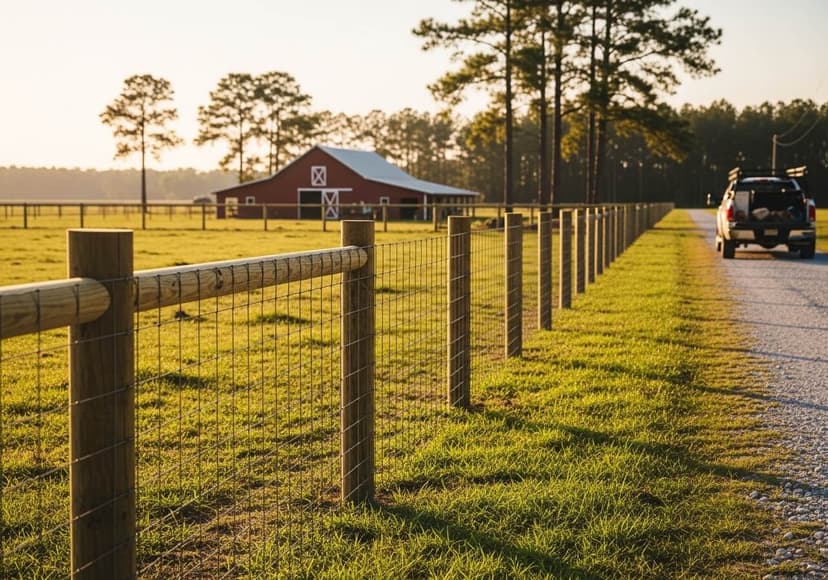
How to Build a Sheep and Goat Fence: A 5-Step DIY Guide
Step 1: Planning Your Fence Line & Gathering Materials A successful fence project begins long before you dig the first h...






